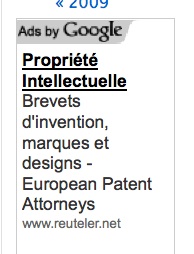Intellectual Property (IP) theft by China is a theme to which Mark Anderson often returns. But even by his standards this blog post is pretty explicit. Extracts:
Two weeks ago, I was visited by two people speaking for China, representing a new company whose job would be to – well, they described it, but it was a bit vague. During this description, we talked about IP and China, and they pointed to the new high-speed trains China is building everywhere.
Indeed, China has laid more high-speed rail, and plans for more of these showcase trains, than any other country in the world.
My visitors pointed to these trains as examples of how China was now developing its own IP, and not just depending on IP theft or forced disclosure from others.
Last week I learned the rest of the story: how Japan (Kawasaki Heavy Industries and others) brought this technology to China, hoping to make money, and now are watching as their IP reappears in Chinese products owned by Chinese companies, and the Japanese get little or nothing.
That’s the story of modern mercantilism, and of the so-called China Miracle.
And:
Last quarter, a letter was reportedly sent from the Prime Minister’s office in the U.K., to the country’s top 300 CEOs, informing them that they should consider all of their current IP crown jewels to have been compromised.
All of them.
This brings the level of security concern to a level not yet anticipated by most executives: what if the cost of broachable security is your company’s future ability to compete and survive?
Ask Boeing, Cisco, Kawasaki, Qualcomm, 3Com, Sony, Google, General Electric, BASF, or Microsoft how they feel about all this. Most will dissemble in public, but tell you the truth offline; and many are rapidly coming clean, even in their public comments, as GE CEO Jeffrey Immelt did not long ago.
You are now CEO of a 50-year-old global corporation with, say, 60,000 employees. And the PM’s letter sits open on your desk.
You call in your CIO, close the door, show him the letter. Have we been hacked? you ask. He goes into geekspeak, describing various levels of difficulties, generally safe behavior, all seems well today, no guarantees or ways to tell.
What? You ask. There are no ways to tell if our crown jewels have been stolen by some competitor?
Here are some of the crown jewels obtained by China in the last couple of decades: the top U.S. nuclear warhead design, from Livermore Labs; wing fabrication machinery and blueprints, from Lockheed-Martin; selected Boeing airframe designs; navigation and rocket design for Intercontinental Ballistic Missiles (specifically, the Long March series), from both Boeing and Lockheed; high-speed router designs from Cisco; the source code to Windows, from Microsoft; complete car designs from Chevy and Ford; advanced chip and fab designs, from IBM; high-speed rail systems from Japan; etc.
And you think your company’s IP is somehow safe?
What we are watching, currently, is the largest theft in global history, happening in front of our own eyes. And while one group is busy exclaiming at the wonder of China (and South Korea and Japan) making all that progress and money in their turn, another group is now recognizing the mercantilist model in its third iteration.
I haven’t been able to find any independent corroboration of the alleged letter from David Cameron, but I haven’t had time to do much digging yet.

